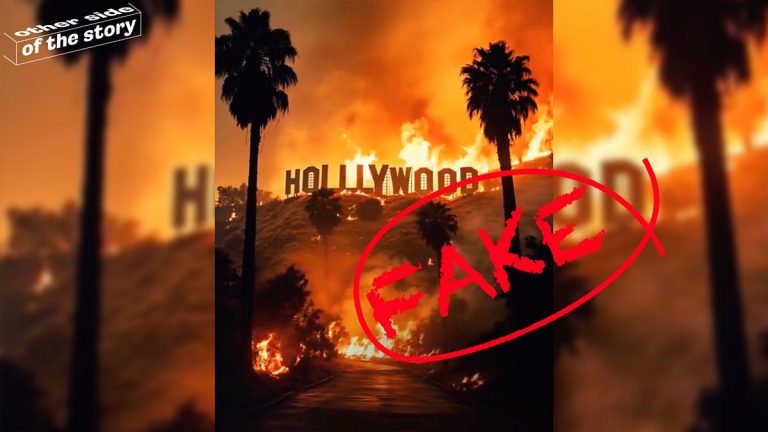Los Angeles Wildfires: Separating Fact from Fiction in the Age of AI-Generated Misinformation
Los Angeles, January 2025 – The devastating wildfires currently ravaging the landscape surrounding Los Angeles have left a trail of destruction and sparked a flurry of speculation about their origins. Amidst the chaos and uncertainty, a disturbing video has surfaced on TikTok, amassing over 200,000 views and claiming to depict a bird intentionally igniting a fire with its beak. The video, captioned "a bird caused a fire in California," has quickly spread across social media platforms, fueling anxieties and adding another layer of complexity to an already dire situation. However, a closer examination reveals telltale signs of manipulation, strongly suggesting the video is a product of artificial intelligence or sophisticated video editing software. The incident highlights the growing threat of misinformation in the digital age, particularly during times of crisis when accurate information is paramount.
The proliferation of AI-generated content and the ease with which it can be disseminated pose a significant challenge to discerning fact from fiction. While the idea of a bird deliberately starting a fire might seem far-fetched, the video’s realistic appearance has convinced many viewers of its authenticity. This incident underscores the urgent need for critical thinking and media literacy skills in navigating the increasingly complex online landscape. Simply accepting information at face value, especially from unverified sources, can lead to the rapid spread of misinformation, hindering effective disaster response and potentially causing unnecessary panic. Authorities are urging the public to exercise caution and verify information with trusted sources before sharing it online.
While the viral video has been debunked, the incident has sparked renewed interest in the relationship between birds and fire. There is documented evidence of certain bird species, particularly birds of prey, utilizing fire as a hunting tool. These "firehawks," as they are sometimes called, have been observed picking up burning embers and dropping them in new locations to flush out prey from the undergrowth. This behavior, observed and documented by Australian indigenous communities, demonstrates the surprising intelligence and adaptability of these avian species. However, experts caution against extrapolating this behavior to the Californian wildfires, emphasizing that there is no evidence to suggest birds played any role in igniting the current blazes.
The actual cause of the Los Angeles wildfires remains under investigation. A team of expert fire investigators is meticulously combing through the affected areas, searching for clues that might shed light on the origins of the devastating inferno. The process is painstaking and often complex, requiring a thorough analysis of burn patterns, weather conditions, and potential ignition sources. Investigators are considering various possibilities, including natural causes such as lightning strikes or human activities such as discarded cigarettes or faulty power lines. Determining the precise cause can take months, even up to a year, requiring extensive investigation and analysis. Authorities remain committed to uncovering the truth and providing answers to the affected communities.
The ongoing investigation highlights the importance of fire prevention and preparedness. While the specific cause of the current fires remains unknown, understanding the common causes of wildfires can help communities take proactive steps to mitigate the risks. Human activities are responsible for a significant portion of wildfires, emphasizing the crucial role of responsible behavior in preventing these devastating events. Clearing brush around homes, properly extinguishing campfires, and avoiding the use of fireworks in dry areas are just a few examples of preventative measures that can significantly reduce the risk of wildfires. Public awareness campaigns and educational programs are essential in fostering a culture of fire safety and promoting responsible land management practices.
As the Los Angeles wildfires continue to burn, the focus remains on containing the flames, protecting lives and property, and supporting the affected communities. The spread of misinformation, as exemplified by the viral bird video, serves as a stark reminder of the challenges posed by the digital age. Combating misinformation requires a multi-pronged approach, including media literacy education, responsible social media usage, and robust fact-checking mechanisms. While technology can be a powerful tool for sharing information and connecting communities, it is crucial to utilize it responsibly and critically evaluate the information we consume and share. The devastating consequences of the wildfires underscore the importance of accurate information, community preparedness, and a collective commitment to fire safety.


